#Assisted Living Facility in Florida
Text
Disability Care and Home Laudable Lake
Introducing Disability Care and Home Laudable Lake, your trusted partner in providing exceptional care for individuals with disabilities. Our mission is simple - to create a nurturing and supportive environment where individuals can thrive and lead fulfilling lives. With a team of experienced professionals, state-of-the-art facilities, and personalized care plans, we are committed to ensuring the well-being and happiness of our residents. Experience the difference at Disability Care and Home Laudable Lake - where everyone is valued, respected, and empowered.

#MHMR housing in Florida USA#Assisted living type housing in Florida#Senior and elderly housing Laudable Lake#Returning Veteran Housing Florida#Disabled veteran housing Florida#Best Group Home Options in Florida#Best Sober Homes in USA#Elderly Care homes in Lauderdale Lakes#Best Sober Living Homes in Florida#Transitional Housing in Florida#Assisted Living Facility in Florida#Simply by Faith Housing#Simplybyfaithhousing
2 notes
·
View notes
Text
Sunny Hills is the perfect assisted living facility for all your loved ones. We have been serving our lovely Florida residents in Homestead since 1998. We care about our residents like no other ALF location. That's why we have such exceptional ratings.
Address : 25268 SW 134th Ave, Homestead, Florida, 33032, United States
Phone : (305) 258-2222
Business Email : [email protected]
Website : https://alfsunnyhills.com/homestead/
Working Hours : Open 24 Hours
#Assisted Living#Assisted Living Facility#Assisted Living Homestead#Sunny Hills Assisted Living#alf Florida
1 note
·
View note
Text
When We Leave NEDA Behind, Where do We Go?
A Guide by Sharon Maxwell @heysharonmaxwell
NEDA has a long history of harming the communities it is supposed to serve. As we #leaveNEDAbehind, I encourage you to follow the following ED orgs who are committed to serving and supporting ALL folks with eating disorders.
The National Alliance for Eating Disorders
The National Alliance for Eating Disorders (“The Alliance”) is the leading national non-profit organization providing education, referrals, and support for all individuals experiencing eating disorders, as well as their loved ones. The Alliance’s services include:
Educational presentations and training days
Free, weekly therapist-led support groups nationwide (virtual and in-person) for those experiencing eating disorders and for their loved ones
Support and referrals through both a free helpline and comprehensive referral website/app
Direct, low-cost, life-saving, outpatient treatment to underinsured and uninsured adults in the south Florida community.
Unique and empowering Southern Smash scale smashing events and SmashTALK panel discussions.
@alliancefored | #notonemore | allianceforeatingdisorders.com
Project HEAL
Project HEAL (Help to Eat, Accept, and Live)’s mission is to break down systemic, healthcare, and financial barriers to eating disorder healing. Project Heal’s goal is to change the systems and, in the meantime, to provide life-saving support to people with eating disorders who the systems fail.
Project HEAL’s services include:
For those unsure of the next step in their eating disorder healing journey, Project HEAL provides free, impartial Clinical Assessments, followed by a comprehensive report with diagnosis, clinical recommendation, and referrals.
For those struggling to access treatment through their insurance, Project HEAL’s Insurance Navigation Program helps individuals understand their often confusing benefits and advocate on their behalf to get their treatment covered.
Project HEAL connects people to free Treatment Placements through the HEALers Circle, a national network of facilities and providers at every level of care. They also offer paid scholarships with providers with shared identities.
Project HEAL offers one-time Cash Assistance grants of $500-$1,500 to individuals who are unable to afford tertiary costs related to their treatment, i.e., housing and travel costs or insurance deductibles.
Crisis Textline: text HEALING to 741741 | www.theprojectheal.org
FEDUP
FEDUP (Fighting Eating Disorders in Underrepresented Populations) is a collective of trans+, intersex, and gender diverse people who believe eating disorders in marginalized communities are social justice issues. FEDUP’s mission is to make visible, interrupt, and undermine the disproportionately high incidence of eating disorders in trans and gender diverse individuals through radical community healing, recovery institution reform, research, empowerment, and education. FEDUP’s services include:
Support groups: FEDUP Closed Support Group for Gender-Diverse Folx, Support Group for Caregivers and Loved Ones of Trans & Intersex People With Eating Disorders, and Closed Support Group for QTBIPOC With Eds
Listing of FEDUP approved providers of therapy, counseling, nutrition services, and recovery coaches
Educational content about eating disorders
A conference for researchers, advocates, and clinicians in the eating disorder field where all attendees are empowered to participate, share their expertise, and learn from one another so that they can incorporate approaches that work - for our patients, our communities, and ourselves
@fedupcollective | fedupcollective.org
Nalgona Positivity Pride
Nalgona Positivity Pride is an unconventional eating disorder awareness organization that shines a light on the often-overlooked societal factors that perpetuate unrealistic and oppressive beauty and health standards. NPP offers a vial space for BIPOC to celebrate and embrace their bodies and identities. Nalgona Positivity Pride’s services include:
Education, such as public speaking services for universities, mental health and eating disorder organizations, and more as well as social media content
Consulting services for eating disorder providers and women of color entrepreneurs, including social media, branding, and event planning. Also, size diversity, creating eating disorder informed media, eating disorder harm reduction
An eating disorder harm reduction hub, including The EDHR Course and The EDHR Harm Reduction Community Services
2 eating disorder support groups: Sage and Spoon and The Eating Disorder Harm Reduction Community Circle
@nalgonapositivitypride | nalgonapositivitypride.com
Body Reborn
Body Reborn is a restorative space for people of color with disordered eating.
Body Reborn’s services include:
The Healing Collaborative - A free 8-week program for people of color. The program consists of three pillars: (1) Body Liberation, (2) Peer Support, and (3) Lifelong Community.
A non-hierarchical, discussion-driven conference that centers experiences of marginalized people in eating disorder care
@bodyreborn | bodyreborn.org
MEDA
MEDA (Multi-Service Eating Disorders Association) is dedicated to the prevention and compassionate treatment of eating disorders, so that every body has access to recovery and support. MEDA’s services include:
Assessments to individual therapy and groups, tailored treatment referrals. to hight levels of care, skill sessions to hels reach meal and snack goals, and 24/7/365 community available
The Sooner the Better helps communities learn the signs and symptoms of disordered eating, exercise, and body image.
MEDA offers presentations from a skilled mental health clinician on a variety of topics including Body Confidence, Eating Disorders, and Promoting Positive Body Culture in Your Schools and Homes.
MEDA also offers high-level clinical trainings for professionals working with eating disorders whether it is in the field of medicine, mental health, or education.
Annual national conference bringing over 275 people together to discuss the latest in eating disorder research and therapies
“Networking with a Purpose” meetings where clinicians come together to learn about specific aspects of treatment
Two graduate clinical interns are trained at MEDA every year, where they are supervised by clinicians and work directly with clients and loved ones.
@recoverwithmeda | medainc.org
ANAD
ANAD (National Association of Anorexia Nervosa and Associated Disorders) provides free peer support to anyone struggling with an eating disorder. ANAD’s services include:
Eating Disorder Peer Support Groups
Recovery Mentorship Program offering free eating disorder support online for those who struggle with eating disorders but are motivated to recover. ANAD mentors are people who have walked the difficult road to recovery from their eating disorder and are recovered for at least 2 years.
Eating Disorder Treatment Directory
ANAD Approach Guides are designed to educate and “guide” its community on a wide range of topics, such as caregiving, pregnancy, binge eating, and navigating life after treatment.
@anadhelp | anad.org
heysharonmaxwell.com | #leaveNEDAbehind
142 notes
·
View notes
Text






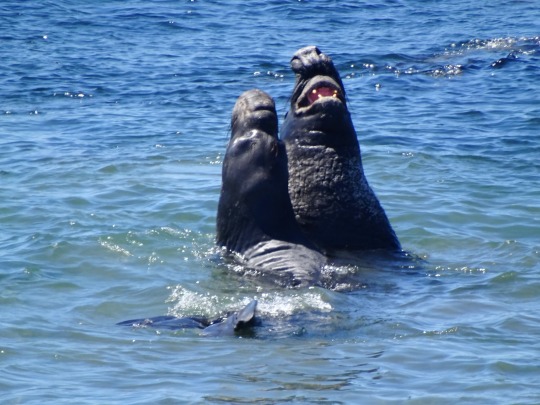










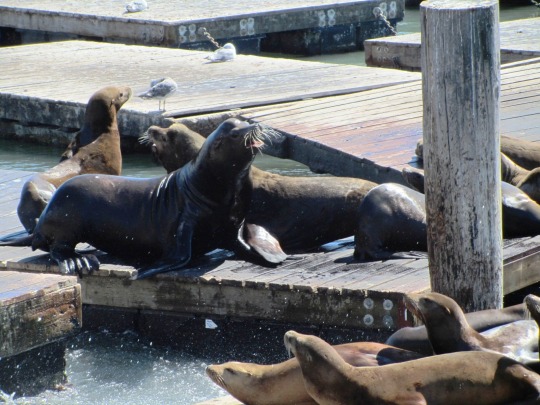

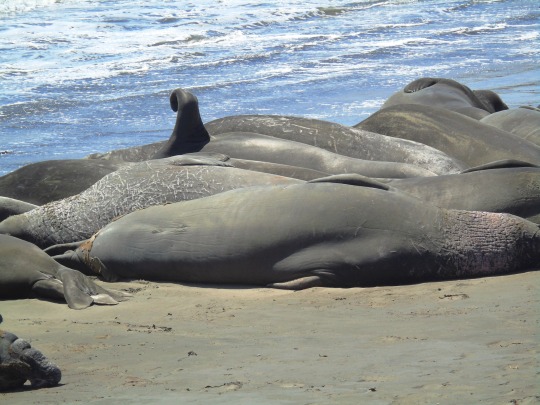

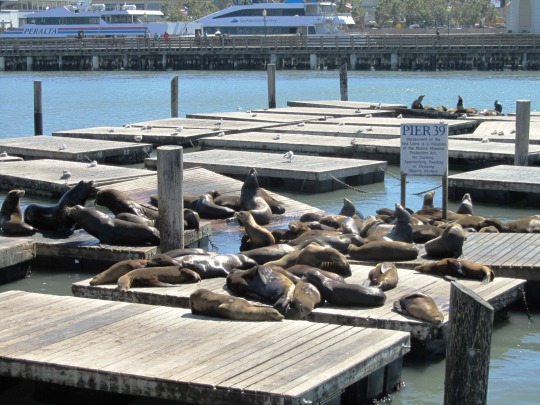

Marine Mammal Rescue Day
Marine Mammal Rescue Day is celebrated on April 27 annually. It is a holiday initiative by the state of California’s Senate. This day honors the people who have made a positive difference in the lives of marine mammals, such as wildlife biologists, veterinarians, and animal care specialists. It is also a day to consider our individual contributions to climate change that affect marine mammals’ lives. For the west coast, spring is the peak of animal rescue season owing to disease and famine. Action is conducted by marine mammal rescue organizations.
History of Marine Mammal Rescue Day
Toni Atkins, a California State Senator, passed the bill that designates April 27 as Marine Mammal Rescue Day. The celebration began in 2017. Gratitude is also given to the Marine Mammal Stranding Network for its continued dedication to the rescue, rehabilitation, and return of creatures stranded off the coast of California. The Marine Mammal Rescue Day celebration may be fairly recent, but the work of these marine mammal rescues has been in existence for far longer.
In 1975, The Marine Mammal Center (T.M.M.C.), formerly known as The California Marine Mammal Center, a private and non-profit organization based in the United States was founded to rescue, rehabilitate, and release injured, ill, or abandoned marine animals. Lloyd Smalley, Pat Arrigoni, and Paul Maxwell created it in Sausalito, California. T.M.M.C. has rescued nearly 23,000 marine mammals since 1975. It also acts as a research and education facility for marine animals such as whales, dolphins, pinnipeds (seals, walruses, and sea lions), otters, manatees, and dugongs.
Many water species require medical assistance due to illness or damage. Polluted waters, marine trash, and illegal fishing gears injure and kill aquatic life in general. The ocean has been polluted and tainted as a result of human acts and inaction. The waters have warmed as a result of climate change, and the patterns in which fish swim have changed. Young marine mammals are frequently unable to travel long distances or dive deep enough to get the food they require. All types of aquatic life are harmed by illegal fishing gear, pollution, and garbage. This is where aquatic mammal rescuers and specialists come in, devoting their time, energy, and resources to safeguard the safety of the marine life that we all should care about.
Marine Mammal Rescue Day timeline
1972
Marine Mammal Protection Act
President Richard Nixon signs the Marine Mammal Protection Act (M.M.P.A.) into law, establishing a national policy.
1975
The Marine Mammal Center
The Marine Mammal Center (T.M.M.C.), a private and non-profit organization based in the United States, is founded.
1992
Foundation for Marine Animal Husbandry
The Foundation for Marine Animal Husbandry, a nonprofit organization in Florida, opens.
2017
Marine Mammal Rescue Day
Toni Atkins, a California State Senator, creates Marine Mammal Rescue Day through a bill.
Marine Mammal Rescue Day FAQs
What are baby whales called?
Baby whales are referred to as ‘calves.’
What are the kinds of marine mammals?
Cetaceans, pinnipeds, sirenians, and marine fissipeds are the four taxonomic groups that make up marine mammals.
Do dolphins lay eggs?
Dolphins are mammals. Thus, they do not lay eggs. Instead, they give live birth to their young.
How to Observe Marine Mammal Rescue Day
Reduce, reuse, recycle: Simple steps to improve your actions to assist in reducing marine body pollution can make a tremendous difference. Reduce, reuse, and recycle as much as possible. Single-use plastic should be avoided and other trash should be disposed of sustainably.
Learn about ocean conservation: Learn as much as you can about ocean conservation. Discover what it entails and how you can help. Know about ocean conservation organizations and consider donating to support their objectives.
Volunteer yourself: Make yourself available to help marine conservation charities. Joining and volunteering with beach cleanup is one of many ways to do so. It may not seem like much but if everyone performed their modest part, we could have a significant influence collectively.
5 Interesting Facts About Marine Mammals
Sea otters have deft hands: Sea otters have deft hands for smashing sea urchins off rocks.
Sleeping with one eye open: Dolphins only sleep with one half of their brain and one eye closed at a time.
Semi-aquatic creatures: Sea lions are semi-aquatic creatures.
Penguin proposal: During mating season, several species of male penguins "propose" to their lady with a pebble.
Elephant relatives: Manatees are related to elephants and have more in common with them than they do with dolphins or whales.
Why Marine Mammal Rescue Day is Important
Human and marine life interaction: Whale watching benefits local economies in a variety of ways. According to studies, people can derive economic benefits from simply knowing that marine mammals are present and healthy even if they are unable to see them.
Marine mammal protection: The Marine Mammal Protection Act protects all 125 species of marine mammals that live in American waters. This makes it illegal to harm a marine mammal in any way that would interfere with its normal behavior.
It promotes a healthy ocean ecosystem: Maintaining the equilibrium of marine ecosystems requires robust marine mammal populations. Reduced numbers of whales, dolphins, or seals can have unpredictably negative consequences for other key species such as fish, birds, and invertebrates.
Source
#Point Arena#Pacific Ocean#Marine Mammal Rescue Day#27 April#travel#MarineMammalRescueDay#animal#wildlife#summer 2017#vacation#USA#original photography#tourist attraction#landmark#Harbor Seal#flora#fauna#Northern elephant seal#California#california sea lion#Monterey#sea otter#Morro Bay#West Coast#Elephant Seal Vista Point#San Simeon#Pier 39#San Francisco#cliff#beach
6 notes
·
View notes
Text

The Severed Finger & The Disappearance of Diane Augat
The last time that 40-year-old Diane Augat was seen was on the 10th of April, 1998. She had been at her sister’s home in Hudson, Florida, when her sister went to a doctor’s appointment. When she arrived back home, Diane was gone.
Later that day, Diane was seen at the Hay Loft tavern at Little Road and State Road 52. The barman told Diane that he wouldn’t serve her because she was walking in circles and was presumably intoxicated.
Diane was reported missing by her mother, Mildred, and investigators launched a search for her. Mildred told investigators that her daughter had a bad habit of trusting strangers, and she had suffered from mental illnesses. Mildred feared that somebody had taken advantage of her daughter’s trusting nature.
Diane had been missing from almost a week when Mildred’s phone began to ring. At the time, Mildred hadn’t been home, but the caller had left a voicemail. When Mildred clicked play, she was stunned to hear her daughter’s voice. She fear in Diane’s voice was audible as she screamed: “Help – let me out!” There was then a scuffling sound as though somebody was grabbing the phone from Diane’s hands. The line then went dead.
The number on the Caller ID box said that the call had come from something called Starlight. Mildred attempted to call the number back but nobody ever picked up. “I think she knew who she was with,” Mildred said.
Less than 24 hours later, somebody was walking along the side of U.S. 19 near New York Avenue when they spotted something on the floor. Looking closer, they recoiled in horror to see that it was a human’s finger, with a red painted nail. The finger was identified via fingerprints as belonging to Diane.
With tears in her eyes, Mildred said: “She is in trouble. Big trouble. They’re probably torturing her.” She said that she feared that whoever had cut off her daughter’s finger was going to continue harming her until she was dead. “I’m hoping that she’s still alive, that they haven’t killed her yet…” she said.
The gruesome find meant that investigators had a specific area to focus their search on. The Pasco County Sheriff’s Office called in a helicopter which scanned the area, but there was no other evidence of Diane. Sheriff’s spokesman Jon Powers stated: “Our case has to include the possibility of foul play.” He then added that they were considering other scenarios as well in which Diane could have somehow lost her finger accidentally and was still alive.
Investigators appealed to the public, and asked everybody to keep a look out for Diane, and if they knew anything about her whereabouts to get in contact.
For years, Diane’s life had been in a downward spiral. Years beforehand, her life had focused on her three children and her husband, Frederic Augat, who ran an assisted living facility in Land O’Lakes. Her sister, Denise, recollected: “She had $100 pocketbooks. She was pretty. There could be 1,000 people in the room, and you’d notice her.” But then in the late 1980s, Diane was diagnosed with manic depression. She was on medication, but still, Diane struggled. In 1998, prosecutors had filed child abuse charges against Diane. She was eventually acquitted of the charges, but further complaints were lodged against her by the Department of Children and Families. Eventually, Diane lost custody of her children. Child protective services believed that Diane was suffering from Munchausen by proxy syndrome, which led her to seek excessive and unnecessary medical treatment for one of her children.
In 1991, Diane and Frederic divorced, and he was granted full custody of their three children. Diane was left distraught, and her life began to unravel rapidly. Her mother recollected: “The crux of her whole mental health issue was losing the children. She put pictures of them on her refrigerator and would look at them and stand there and just cry and cry.”
As a coping mechanism, Diane turned to alcohol. She tried to find company at the local bar, and Mildred feared that she had struck up a conversation with somebody who had nefarious motivations. Diane did not drive, so she either walked, hitchhiked or got rides from friends. This led to fears that Diane could have been abducted. Diane had also stopped taking her medication, and had spent some time in a psychiatric facility. She had been taken into custody under the state’s Baker Act at least 32 times. Under the Baker Act, a judge, police officer or doctor decides whether a person is mentally ill enough to require involuntary confinement.
Less than a week later, convenience store manager Patricia Sblendorio noticed something tucked into the store’s outdoor freezer case. It was a bag of neatly folded clothes. Diane was a frequent patron of the store, so Patricia got in contact with her sister, Deborah Cronin. Deborah identified the bag of clothing as belonging to her sister as she had gifted her some of them.
Investigators were dispatched to the convenience store to recover the bag of clothing and enter it into evidence. Sheriff’s spokesman Kevin Doll said that the clothing could have been placed there by a group of juveniles that often hung out with Diane at her home on Chesapeake Drive in Odessa. Since her disappearance, the group of youths were accused of looting her home.
Eventually, the days turned to weeks, the weeks turned to months and then the months turned to years. Investigators spoke with more than 100 people and followed several leads, but each lead only led to a dead end. Mildred said in 2000: “A part of me is gone. I never accepted she was dead.”
In November of that year, Terry Wilson walked into the Circle K convenience store at 15837 U.S. 19 to purchase some items. She saw a clear, zip-lock plastic bag on top of the lotter corner and decided to pick it up. She walked outside and once inside her car, she examined the bag. The name “Diane” was written in black marker on the bag.
Terry’s heart skipped a beat. Terry was the girlfriend of Diane’s brother. Mildred identified the items in the bag as items her daughter would have owned: black eyeliner, Taboo perfume, and a tube of bright pink lipstick. The discovery offered the family a glimmer of hope that Diane could still be alive. Once again, however, the discovery only led to another dead end.
Over 24 years have passed since Diane Augat was last seen alive. Despite an extensive search, Diane still remains missing today.
7 notes
·
View notes
Text
Medical licensing officials in multiple states are scrambling to stop nurses with fraudulent academic credentials from caring for patients, after three Florida schools were accused of selling thousands of bogus diplomas.
New York regulators told 903 nurses in recent weeks to either surrender their licenses or prove they were properly educated. Delaware and Washington state officials have yanked dozens of nursing licenses. Texas filed administrative charges against 23 nurses. More actions in additional states are expected.
In some cases, lawyers for the nurses contend states are questioning the credentials of caregivers who earned diplomas legitimately. But there's wide agreement in the industry that nurses with fraudulent degrees need to be rooted out.
"The public needs to know that when they’re the most fragile, when they’re sick, when they’re in a hospital bed, that the individual who is at their bedside has gone through the required training," said Jennifer Mensik Kennedy, president of the American Nurses Association union.
States are acting in the wake of Operation Nightingale, a federal investigation into what officials say was a wire fraud scheme in which several now-closed Florida nursing schools sold phony nursing diplomas and transcripts from 2016 to 2022. Twenty-five defendants, including school owners and alleged recruiters, have been charged, U.S. Attorney for the Southern District of Florida Markenzy Lapointe announced in late January. Those cases are pending.
About 7,600 students paid an average of $15,000 for bogus diplomas, according to prosecutors. Around 2,400 of those people then passed a licensing exam to obtain jobs as registered nurses and licensed practical nurses or vocational nurses in multiple states, prosecutors say.
FEDERAL AUTHORITIES IN FLORIDA CHARGE 25 PEOPLE IN CONNECTION WITH SCHEME TO CREATE FAKE NURSING DIPLOMAS
How did so many test takers pass without the required classroom and clinical work? In some cases, they were experienced L.P.N.s seeking to become R.N.s. Some had been health care providers in other countries.
The nurses got jobs across the country, including at a hospital in Georgia, Veterans Affairs medical centers in Maryland and New York, a skilled nursing facility in Ohio, and an assisted living facility in New Jersey, according to court filings.
Students came not only from Florida, but also New York, New Jersey, Pennsylvania, Texas and Delaware. Many of the students took their licensing exam in New York, where they can sit it multiple times, according to investigators.
Investigators identified the Florida nursing schools as the Palm Beach School of Nursing; Siena College, a school in Broward County that wasn't related to the college of the same name in New York; and the Sacred Heart International Institute, which was also based in Broward County and had no relation to a university with a similar name in Connecticut.
It was not entirely clear how many of the roughly 2,400 nurses with credentials from these schools are currently employed, or where.
Federal officials shared information so states could pursue nurses with phony academic credentials. Some states have taken action.
The Washington State Nursing Care Quality Assurance Commission rescinded the R.N. licenses of 17 people and denied license applications for four. The Delaware Board of Nursing annulled 26 licenses. The Georgia Board of Nursing asked 22 nurses to voluntarily surrender their licenses.
TEEN GETS COLLEGE DIPLOMA BEFORE FINISHING HIGH SCHOOL
The 23 nurses facing possible license revocations in Texas can continue working while their disciplinary cases are pending. Texas Board of Nursing general counsel James "Dusty" Johnston said more charges could come as officials develop "the necessary information for each individual."
A spokesperson for Veterans Affairs said it removed 89 nurses "from patient care" nationwide last year immediately after being notified by federal officials. The agency has not found any instances of patients being harmed.
New York's Office of the Professions posted on the state education department's website that it expects some of the 903 licensees who attended the schools "did, in fact, attend required hours and clinicals and are properly licensed." Those people are being asked to have a qualified nursing program submit verification.
Attorneys for some of the nurses in New York and Georgia say nurses who legitimately earned diplomas are getting caught up in the investigation.
"There are obviously people who bought transcripts who are fraudulent and should not be practicing nursing under any circumstances," said Atlanta attorney Hahnah Williams. "But there are also people who went to those schools legitimately and did nothing wrong. And they are somehow being lumped together with the fraudulent nurses."
Williams said her clients are hardworking immigrants who went to schools that were accredited at the time and have since worked for many years without incident.
Similarly, attorney Jordan Fensterman in New York said he has clients who attended classes at one of the schools to finish up their R.N. degrees and then worked during the pandemic. He said those nurses deserve due process now.
The state board actions are taking place as hospitals across the nation try to deal with chronic staffing challenges.
"Hopefully, the number is smaller once the authorities sort things out," said Kennedy, the American Nurses Association president.
15 notes
·
View notes
Text
Myrta Baptiste, 26 (USA 1982)
Myrta Baptiste was 26 years old and 10 weeks pregnant with her third baby. She went to an abortion facility deceptively called Women's Care Center. This dangerous facility already had a history of lawsuits and client deaths.

The abortionist was Orlando Zaldivar. He perforated Myrta’s uterus not once but twice. The staff at the abortion facility did not call an ambulance for so long that Myrta was in critical condition.
When Myrta arrived at the hospital, doctors struggled to keep her alive. She was bleeding internally from her severe injuries. They tried to contact Zaldivar for more information on Myrta’s injuries, but he apparently couldn’t be reached for 7 hours.
Myrta bled to death from her injuries on December 18, 1982.
A police investigation was launched into her death. Zaldivar insisted that Myrtha was “fine” after the abortion, but a police officer who was present at her autopsy said, “You could stick your fingers through the holes in her uterus.”
It was discovered that Zaldivar’s license was actually suspended at the time of the abortion. This is why Myrta’s death was counted as a death from illegal abortion in statistics. Myrta had no idea that the license was suspended or that the facility had never been inspected by the health department. At the time, Florida’s lax laws on abortion regulations allowed abortion facilities to get away with almost anything.
WCC killed at least 4 of their clients (including 2 who were killed in the same 3 weeks) and maimed countless more before finally being shut down. The Assistant State Attorney declared the facility a threat to “the lives, health and safety of this community.”
"Judge shuts abortion clinic; U.S. joins death probe," Miami Herald, January 11, 1983
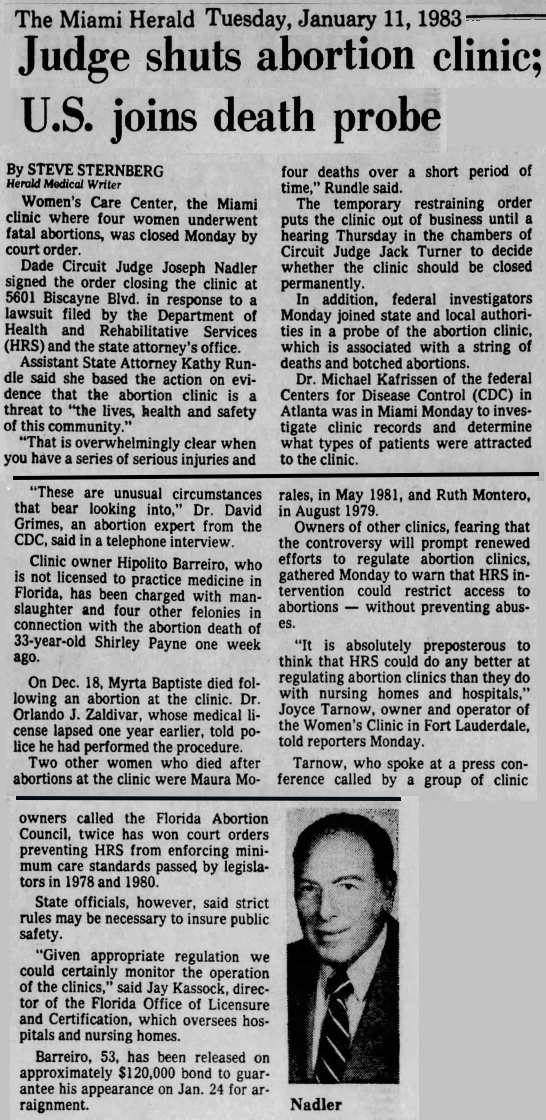
"Several suits filed against care center since 1979," Miami Herald, January 7, 1983

“26-Year-Old Mother of Two is Dead After Abortion at Miami Women’s Clinic,” Miami Herald, Dec. 19, 1982
Miami Herald 12-22-82 1-5-83 5-4-83
“Third death at women’s clinic ruled accidental,” St. Petersburg Times, Dec. 20, 1982;
“Cluster of Abortion Deaths at a Single Facility,” Kafrissen, Grimes, Hogue, Sacks, Obstetrics & Gynecology, 68:3, September 1986, 387-389
Miami Police Tie 4th Death To Abortions
#tw abortion#pro life#tw murder#tw ab*rtion#abortion#abortion debate#unsafe yet legal#death from legal abortion#victims of roe
2 notes
·
View notes
Photo

The Severed Finger & The Disappearance of Diane Augat
The last time that 40-year-old Diane Augat was seen was on the 10th of April, 1998. She had been at her sister’s home in Hudson, Florida, when her sister went to a doctor’s appointment. When she arrived back home, Diane was gone.
Later that day, Diane was seen at the Hay Loft tavern at Little Road and State Road 52. The barman told Diane that he wouldn’t serve her because she was walking in circles and was presumably intoxicated.
Diane was reported missing by her mother, Mildred, and investigators launched a search for her. Mildred told investigators that her daughter had a bad habit of trusting strangers, and she had suffered from mental illnesses. Mildred feared that somebody had taken advantage of her daughter’s trusting nature.
Diane had been missing from almost a week when Mildred’s phone began to ring. At the time, Mildred hadn’t been home, but the caller had left a voicemail. When Mildred clicked play, she was stunned to hear her daughter’s voice. She fear in Diane’s voice was audible as she screamed: “Help – let me out!” There was then a scuffling sound as though somebody was grabbing the phone from Diane’s hands. The line then went dead.
The number on the Caller ID box said that the call had come from something called Starlight. Mildred attempted to call the number back but nobody ever picked up. “I think she knew who she was with,” Mildred said.
Less than 24 hours later, somebody was walking along the side of U.S. 19 near New York Avenue when they spotted something on the floor. Looking closer, they recoiled in horror to see that it was a human’s finger, with a red painted nail. The finger was identified via fingerprints as belonging to Diane.
With tears in her eyes, Mildred said: “She is in trouble. Big trouble. They’re probably torturing her.” She said that she feared that whoever had cut off her daughter’s finger was going to continue harming her until she was dead. “I’m hoping that she’s still alive, that they haven’t killed her yet…” she said.
The gruesome find meant that investigators had a specific area to focus their search on. The Pasco County Sheriff’s Office called in a helicopter which scanned the area, but there was no other evidence of Diane. Sheriff’s spokesman Jon Powers stated: “Our case has to include the possibility of foul play.” He then added that they were considering other scenarios as well in which Diane could have somehow lost her finger accidentally and was still alive.
Investigators appealed to the public, and asked everybody to keep a look out for Diane, and if they knew anything about her whereabouts to get in contact.
For years, Diane’s life had been in a downward spiral. Years beforehand, her life had focused on her three children and her husband, Frederic Augat, who ran an assisted living facility in Land O’Lakes. Her sister, Denise, recollected: “She had $100 pocketbooks. She was pretty. There could be 1,000 people in the room, and you’d notice her.” But then in the late 1980s, Diane was diagnosed with manic depression. She was on medication, but still, Diane struggled. In 1998, prosecutors had filed child abuse charges against Diane. She was eventually acquitted of the charges, but further complaints were lodged against her by the Department of Children and Families. Eventually, Diane lost custody of her children. Child protective services believed that Diane was suffering from Munchausen by proxy syndrome, which led her to seek excessive and unnecessary medical treatment for one of her children.
In 1991, Diane and Frederic divorced, and he was granted full custody of their three children. Diane was left distraught, and her life began to unravel rapidly. Her mother recollected: “The crux of her whole mental health issue was losing the children. She put pictures of them on her refrigerator and would look at them and stand there and just cry and cry.”
As a coping mechanism, Diane turned to alcohol. She tried to find company at the local bar, and Mildred feared that she had struck up a conversation with somebody who had nefarious motivations. Diane did not drive, so she either walked, hitchhiked or got rides from friends. This led to fears that Diane could have been abducted. Diane had also stopped taking her medication, and had spent some time in a psychiatric facility. She had been taken into custody under the state’s Baker Act at least 32 times. Under the Baker Act, a judge, police officer or doctor decides whether a person is mentally ill enough to require involuntary confinement.
Less than a week later, convenience store manager Patricia Sblendorio noticed something tucked into the store’s outdoor freezer case. It was a bag of neatly folded clothes. Diane was a frequent patron of the store, so Patricia got in contact with her sister, Deborah Cronin. Deborah identified the bag of clothing as belonging to her sister as she had gifted her some of them.
Investigators were dispatched to the convenience store to recover the bag of clothing and enter it into evidence. Sheriff’s spokesman Kevin Doll said that the clothing could have been placed there by a group of juveniles that often hung out with Diane at her home on Chesapeake Drive in Odessa. Since her disappearance, the group of youths were accused of looting her home.
Eventually, the days turned to weeks, the weeks turned to months and then the months turned to years. Investigators spoke with more than 100 people and followed several leads, but each lead only led to a dead end. Mildred said in 2000: “A part of me is gone. I never accepted she was dead.”
In November of that year, Terry Wilson walked into the Circle K convenience store at 15837 U.S. 19 to purchase some items. She saw a clear, zip-lock plastic bag on top of the lotter corner and decided to pick it up. She walked outside and once inside her car, she examined the bag. The name “Diane” was written in black marker on the bag.
Terry’s heart skipped a beat. Terry was the girlfriend of Diane’s brother. Mildred identified the items in the bag as items her daughter would have owned: black eyeliner, Taboo perfume, and a tube of bright pink lipstick. The discovery offered the family a glimmer of hope that Diane could still be alive. Once again, however, the discovery only led to another dead end.
Over 24 years have passed since Diane Augat was last seen alive. Despite an extensive search, Diane still remains missing today.
12 notes
·
View notes
Text

FORT MYERS, Fla. – Shannon Tolbert and her cousins had no power two days after Hurricane Ian made landfall, so they cooled off in the shade of a compact SUV trunk Friday afternoon in front of the house.
They live in Dunbar, a historically Black area of Fort Myers that also houses a growing Hispanic and Latino population. Lining the roads were uprooted trees, straggled power lines, piles of fence remnants and storm debris from Ian’s Category 4 winds.
“Every time we have a storm, we’re the last ones to get power,” said Tolbert's cousin, lifetime Dunbar resident Valorie Simmons, a steel factory worker. Simmons' daughter Cherell Lindsey nodded along with Tolbert's daughter, who was lounging in the SUV's back seat.
“It’s expected," Simmons said. "Where it's Black and brown people ... we get it last."
Black residents of Dunbar said they fear the aftermath of Hurricane Ian will be no different, saying the city’s wealthier, majority-white neighborhoods typically have better power grids and get power back sooner.
“That’s going to be No. 1 priority. Anything where it’s majority people of color, it’s going to be last,” said Tolbert, a dental assistant.
About 1.3 million Floridians remained without power Saturday, officials said during a weekend news conference. Florida Power and Light Company said it's working on restoring power to affected customers, reporting as of 10 a.m. it has restored power "where possible" to two-thirds of customers, according to a Saturday news release from the company, with about 700,000 remaining.
BARRIER ISLAND:Amid 'gut-wrenching' destruction from Ian, Florida residents band together
'NIGHTMARE':After Hurricane Ian, Fort Myers residents mourn low-lying neighborhoods
The company estimated power for "most customers" in Fort Myers' Lee County, where about 73% of households still lack power, would be restored by Saturday.
"The road is challenging, but we won't back down and we won't stop working until every customer is restored," Eric Silagy, CEO and chairman, said in a news release.
Still, Dunbar residents have grown accustomed to relying on themselves and looking out for each other. Tolbert conserves gasoline usage, only running the generator for the refrigerator. She keeps the windows open at night to let brisk air in.
“We can survive off anything,” Tolbert said. She, Simmons and Lindsey said care packages are rare.
"If they do do it in our neighborhood, it's only one stop, one shop. And they don't do it in multiple places," Lindsey said.
In Dunbar, streets and parks are named for prominent late Black activists and leaders: Roberto Clemente, a Puerto Rican baseball player of African descent also known for his charity work in Latin America; Ella Mae Lee, philanthropist and entrepreneur; and Veronica Shoemaker, a civil rights activist, flower shop owner and first Black City Council member.
A few minutes away off Michigan Avenue, a half mile north of the Lee County Black History Society, lives Lorieann Thurman. She’s a truck driver at a waste management facility that she says is now underwater on leveled Fort Myers Beach.
“I’ve been here all my life, but this was the most traumatic storm ever. Trees down, and people’s windows blowing out of their house,” she said. “(Ian) was very disrespectful because he didn't just come and go, he just stayed right there. He lingered. He made sure he came to show you that God is still in control.”
Roughly 16 miles from the Gulf Coast, the Dunbar community is a few miles south of the Caloosahatchee River that runs through the city. It's tucked in 33916, a ZIP code with a median income of $37,740, according to U.S. census estimates, and a per capita income of $21,700. About a quarter of people live below the poverty line.

WATCH:South Carolina feeling the effects of Hurricane Ian
WATCH:Ian resurges before landfall in South Carolina, then weakens to post-tropical cyclone
The Dunbar area was in Evacuation Zones C and D. While risks are less, the zones are still vulnerable to serious hurricane damage. But storm preparation to weather any aftermath can be difficult for low-income households.
“Everybody don't have or couldn't go out and get what they needed because they didn't have the finances,” she said.
Thurman echoed Tolbert on the power situation.

Her cousin across the street, Latronia Latson – 61, a former private duty nurse for seniors who is now on disability – said she was afraid to evacuate because of health concerns. She didn’t want to shelter with others for fear of catching the coronavirus. Her windows were blown out and along with other debris, a tall palm tree toppled in her yard.
“The fight with the wind – we had mattresses and stuff up to the window, and that wind was so strong, it was fighting against us,” said Latson, who lives there with her granddaughter and daughter. “We did what we had to do to survive.”
On Friday afternoon, Haitian immigrant Marie Fleurette Radius sprawled on a blanket on the front porch with her baby granddaughter Sarah-Gasnaya, her grandson Christ was playing in the yard and steam was rising from a pot of rice reheating on the back porch.

Their big sister, Lindsay Garconvil, 15, said her window broke as she was on her bed, shards of glass surrounding her. The family rode out the hurricane in a different rental, which sustained more damage, so they found this house to move into. Still, it wasn’t without its own damage, with leaks and broken windows.
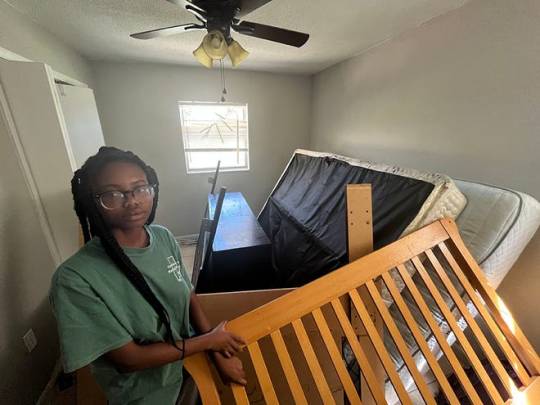
Now without power, when night sets in, Radius said baby Sarah is afraid of the dark, so they have to leave a flashlight on.
Radius called to check on her daughter, the kids’ mom, Marie Stinfil, a nursing assistant who was at work that day, two days after the storm.
“It’s very stressful,” Stinfil said by phone, exasperated. “We lost a lot of food.”
Back a couple of miles west, Tolbert recalled stopping by an eatery that took only cash after the storm. A white couple in front of her didn’t have any, just cards. She insisted to pay the $35 bill for them. “I said, ‘you don't have to pay me back. Don't even worry about it,’” she said.
Tolbert and her cousins all said – they just "keep pushing," and help each other.
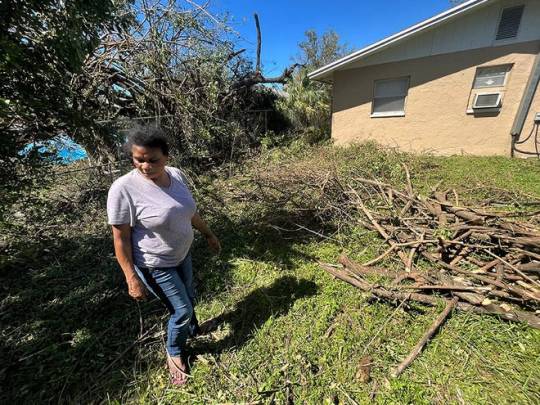
#After Hurricane Ian hits Fort Myers#Black neighborhood residents say they aren’t counting on much help#hurricane ian#Black Residents of Fort Myers Neglected post hurricane ian#florida#racism in rescue#Dunbar
5 notes
·
View notes
Text
The Benefits of Medicare Insurance in Tampa
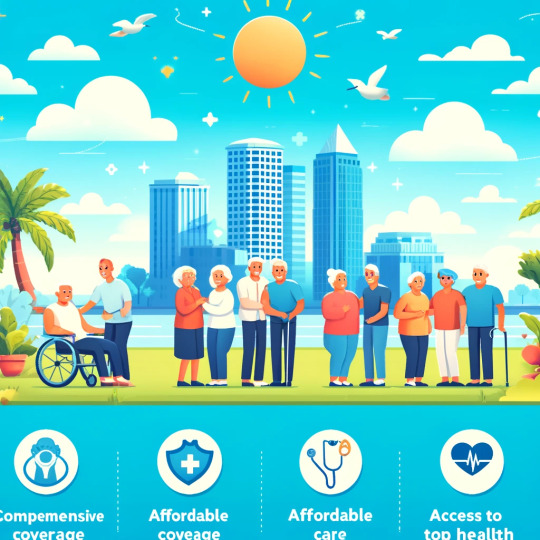
Living in Tampa means enjoying the beautiful weather, vibrant culture, and a high quality of life. As you or your loved ones age, having reliable healthcare coverage becomes increasingly important. Medicare insurance is a valuable resource for many Tampa residents, offering a range of benefits that ensure access to quality healthcare. In this blog, we'll delve into the benefits of Medicare insurance in Tampa and why it’s a wise choice for your health and well-being.
1. Comprehensive Coverage
Medicare insurance provides comprehensive coverage that includes a variety of medical services. Original Medicare (Part A and Part B) covers hospital care, doctor visits, preventive services, and more. With Medicare, you can have peace of mind knowing that a significant portion of your healthcare needs are covered. This comprehensive coverage is especially beneficial in a city like Tampa, where having access to diverse medical services is essential for maintaining a healthy lifestyle.
2. Access to Top Healthcare Providers
Tampa is home to some of the best healthcare providers and medical facilities in Florida. With Medicare insurance, you have access to a broad network of doctors, specialists, and hospitals. This means you can receive high-quality care from renowned healthcare professionals without worrying about exorbitant out-of-pocket costs. Whether you need routine check-ups, specialized treatments, or emergency care, Medicare ensures you can access the best medical services available in Tampa.
3. Preventive Services
Preventive care is a crucial aspect of staying healthy, and Medicare insurance places a strong emphasis on preventive services. Medicare covers various preventive services at no extra cost, including screenings, vaccinations, and annual wellness visits. These services help detect health issues early, when they are most treatable, and promote overall well-being. In Tampa, where an active and outdoor lifestyle is common, staying on top of your health with preventive care is essential.
4. Affordable Prescription Drug Coverage
Prescription drug costs can add up quickly, especially if you have chronic conditions that require ongoing medication. Medicare Part D offers prescription drug coverage that can significantly reduce your out-of-pocket expenses for medications. By enrolling in a Medicare Part D plan, you can ensure that you have access to the medications you need at an affordable price. This is particularly beneficial for Tampa residents who need consistent access to prescription drugs to manage their health effectively.
5. Medicare Advantage Plans
Medicare Advantage (Part C) plans are an alternative to Original Medicare that offer additional benefits. These plans are offered by private insurance companies approved by Medicare and often include extra services such as dental, vision, and hearing coverage. In Tampa, where many residents seek comprehensive healthcare solutions, Medicare Advantage plans provide a convenient way to receive all your healthcare services through a single plan. These plans often include wellness programs, fitness memberships, and other perks that enhance your overall quality of life.
6. Supplemental Coverage Options
For those looking to minimize out-of-pocket costs even further, Medicare Supplement (Medigap) plans are available. These plans help cover expenses that Original Medicare doesn’t, such as copayments, coinsurance, and deductibles. Having a Medigap plan can provide additional financial security and peace of mind, knowing that unexpected medical costs won’t derail your budget. Tampa residents can benefit greatly from the added coverage that Medigap plans offer, ensuring comprehensive protection against medical expenses.
7. Support and Resources
Navigating the complexities of Medicare can be challenging, but there are plenty of resources available to help Tampa residents. Local agencies and organizations provide assistance with Medicare enrollment, plan selection, and understanding your benefits. Additionally, insurance agencies like AHG Brokers offer expert guidance and personalized support to help you make informed decisions about your Medicare coverage. Having access to these resources ensures that you can maximize your Medicare benefits and get the most out of your healthcare coverage.
Conclusion
Medicare insurance offers a multitude of benefits that are particularly advantageous for Tampa residents. From comprehensive coverage and access to top healthcare providers to affordable prescription drug plans and additional benefits through Medicare Advantage, Medicare ensures you have the healthcare support you need. By taking advantage of preventive services and exploring supplemental coverage options, you can enhance your health and well-being.
Ready to explore your Medicare insurance options in Tampa? Contact AHG Brokers, an expert health insurance agency in Tampa, today! Our team of experienced professionals is here to guide you through the complexities of Medicare and help you find a plan that provides the coverage and peace of mind you deserve. Don’t wait—secure your healthcare future with AHG Brokers now!
0 notes
Text
Pompano Beach oceanview rental
Looking for a perfect getaway spot with stunning ocean views? Look no further than Pompano Beach! This coastal gem in Florida offers beautiful beaches, a vibrant community, and plenty of activities to keep you entertained. And the best way to experience all this is by staying in an oceanview rental. Let’s dive into why a Pompano Beach oceanview rental is the ideal choice for your next vacation.
Why Choose an Oceanview Rental in Pompano Beach?
Stunning Views: Wake up to the sound of waves and enjoy breathtaking sunrises right from your balcony. The oceanview rentals in Pompano Beach provide a serene and picturesque setting, perfect for relaxation.
Beach Access: Staying in an oceanview rental means the beach is just steps away. Spend your days lounging on the sand, swimming in the ocean, or trying out water sports like paddleboarding and jet skiing.
Luxury and Comfort: Our rentals offer all the comforts of home with the added luxury of stunning ocean views. From fully equipped kitchens to spacious living areas and modern amenities, you’ll have everything you need for a comfortable stay.
Proximity to Attractions: Pompano Beach is not just about the beach. Enjoy nearby attractions like the Pompano Beach Pier, Butterfly World, and a variety of local shops and restaurants. There’s something for everyone!
What to Expect from Our Oceanview Rentals
At World's Best Vacation Rental, we pride ourselves on offering top-notch accommodations. Here’s what you can expect from our oceanview rentals in Pompano Beach:
Spacious and Stylish Interiors: Our rentals are designed with your comfort in mind. Enjoy open-concept living spaces, modern decor, and large windows that let in plenty of natural light.
Fully Equipped Kitchens: Whether you’re a gourmet chef or just enjoy cooking, our rentals come with fully equipped kitchens. Prepare your meals with ease and enjoy them on your private balcony overlooking the ocean.
Resort-Style Amenities: Take advantage of amenities like swimming pools, fitness centers, and private beach access. Our rentals offer the perfect blend of luxury and convenience.
Personalized Service: We are dedicated to making your stay as enjoyable as possible. From the moment you book to the time you check out, our team is here to assist you with any needs or questions.
Frequently Asked Questions (FAQ)
Q: How can I book a Pompano Beach oceanview rental? A: Booking is easy! Visit our website World's Best Vacation Rental, browse our selection of oceanview rentals, and follow the simple booking process.
Q: What is the check-in and check-out time? A: Check-in is at 3 PM, and check-out is at 11 AM. If you need to arrange different times, please contact us, and we’ll do our best to accommodate your needs.
Q: Are pets allowed in the rentals? A: Some of our rentals are pet-friendly. Please check the specific listing details or contact us to confirm if your furry friend can join you.
Q: Is there parking available? A: Yes, all our rentals come with parking facilities. Some offer private garages, while others have designated parking spots.
Q: What are the nearby attractions? A: Besides the beautiful beach, you can explore the Pompano Beach Pier, Hillsboro Inlet Lighthouse, Isle Casino, and more. Our rentals are conveniently located close to various attractions.
Plan Your Perfect Beach Vacation Today!
Don’t miss out on the opportunity to experience the best of Pompano Beach from the comfort of an oceanview rental. Whether you’re planning a romantic getaway, a family vacation, or a solo retreat, our rentals provide the perfect home base. Visit World's Best Vacation Rental today to book your dream oceanview rental and start planning an unforgettable vacation!
0 notes
Text
Coping with Dementia Care Education: Let's Call It Kid Therapy
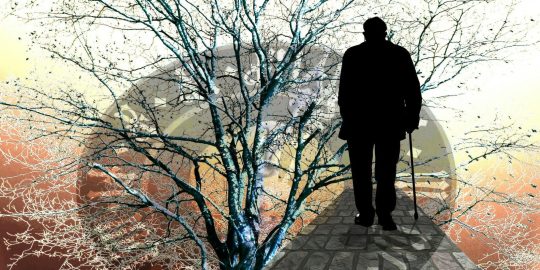
I recently observed a situation I found very troubling. I was not asked to consult, so I kept my opinion to myself, but I can certainly write about it to possibly benefit others facing a similar situation.
A three-generational family had decided to place a member with Alzheimer’s disease into professional memory care. The three generations consisted of a married couple, the mother’s mother, now with dementia; and their nine-year-old son. The grandmother doted on the boy and was directly and beneficially involved in his upbringing. He loved his grandmother and spent many hours playing cards or making puzzles with her. They clearly had a very special bond.
As grandmother began to decline, the couple made the decision that they had to place her in professional care. This was an especially difficult decision for her daughter, who struggled with it daily, even when her mother seemed content with her new situation. The daughter was so upset that the day her mother was placed in memory care, she decreed that her son would never be allowed to visit her. She did not want the young boy to see the “horrors” of his grandmother’s cognitive decline, nor the surroundings in which she lived among others with varying degrees of dementia.
Because this is a difficult situation for any family, I understood the mother’s point of view, but I could not sympathize or agree with her decision. I felt she was so wrapped up in her own grief that she had not given enough consideration to the bond between her mother and her son, nor enough thought to their needs. I felt it was a decision from which no one in the family would benefit.
Seniors with Dementia Interacting with Children can be Magical!
I guess some of my reaction to this situation came from the many hours I have observed seniors with dementia interacting with children. It is downright magical! Children can be so accepting, patient, and non-judgmental, and our seniors with dementia appear to love the guileless and simple interactions that children provide. It is so wonderful; I believe a practice of therapy can be built around it . . . let’s call it “Kid Therapy!”
In fact, it is nothing new. Decades ago, a large assisted living and memory care facility was built in Largo, Florida. It had such a large staff of young women that they included child day-care in its planning, which proved to greatly improve the morale and stability of its staff. In fact, it worked so well that it was opened to the public and became a professional service within the community. But the best part was yet to come.
I don’t know how it all happened, but someone decided it would be a good idea to bring the young children into assisted living and memory care units to meet and interact with the residents. This was not just a good idea; it was brilliant and became a regular weekly, structured program from which everyone received benefit. The kids looked forward to it, and the residents were ecstatic each time their young friends came to visit.
We in our middle years probably give ourselves way too much credit. We think we are no longer vulnerable to the innocence and naivete of youth, but we are not yet subject to the ills and possible cognitive decline of old age. Thus, we know what’s best for everyone. Not always!
I hope the young woman who wanted to separate her son from his grandmother eventually overcame her own grief to rethink the situation. She might have realized that continuing interaction would have helped her son develop empathy that would have eventually made him a better and more functional adult. And his grandmother’s declining years would certainly have been more joyful. Together, they both could have experienced a better quality of life. And the whole family might have learned we cannot hide from dementia, and that we cannot protect others from it.
I know Kid Therapy works because I have seen it work. It is also recognized as Intergenerational and that simply means: existing or occurring between generations. Children are so much stronger than we think they are, and they too need to learn that “We all deserve the best.”
About Debbie Selsavage, CDP
Debbie Selsavage is a Certified Trainer and Consultant in the Positive Approach to Care and a Certified Dementia Practitioner. She is a passionate provider of dementia education to individuals, groups and organizations of all sizes. Debbie authors this monthly column to assist caregivers in coping with Dementia. Her company, Coping with Dementia LLC is dedicated to making life better for individuals living with dementia. Contact Debbie at [email protected].
Read the full article
0 notes
Text
Paint Spaces with Residential and Commercial Ponte Vedra Florida
The destination Ponte Vedra Beach is located in northern Florida is known for its landscapes with beautiful beaches, the significant community, and unique neighborhoods which may attract many residents and businesses. First of all, if you are a homeowner and you want to add some life to your house, or you are a business person and you need to improve the appearance of your shop, you should be extra attentive when choosing the residential and commercial Ponte Vedra Florida painting services. This blog explains to you all the options and choices that Ponte Vedra offers when it comes to painting services of homes and offices.

Transform Your Home
Your home is your haven, a reflection of your personality and style. A fresh coat of paint can breathe new life into your living space, boosting curb appeal and creating a more inviting atmosphere. Here's what to consider when searching for residential painting services Ponte Vedra Florida:
Services Offered: Look for companies that offer a range of services tailored to your needs. This might include interior and exterior painting, drywall repair, power washing, and cabinet refinishing.
Experience and Expertise: Choose a company with a proven track record of high-quality work. Experienced painters understand the specific requirements of residential projects and can advise on paint types, colors, and finishes.
Preparation and Cleanup: A reputable company will prioritize meticulous preparation (covering furniture, protecting floors) and thorough cleanup upon completion.
Safety and Licensing: Ensure the company is licensed and insured, protecting both you and their workers.
Communication and Customer Service: Look for a company that values clear communication, listens to your vision, and is responsive to your questions and concerns throughout the project.
Find the Perfect Color Palette:
Cool pastels such as blue, white, and cream instantly make the room look spacious and relaxing, which is perfect for designing bedrooms evocative of the beach setting. Brown is one of the warm colors that provide a warm atmosphere when used as decor color. Painting one wall of a room or door with an interesting color can provide an appeal and character to the room. Leith suggests selecting colors that play well with the surrounding waters and considers using more shades of turquoise, coral, or deeper blues.
Create a Lasting Impression
The facial appearance of your commercial facility is the first point of contact that your customers will face. Peeling of paint can portend of lack of care or maintenance. Engaging professional commercial painting services in Ponte Vedra can assist in cultivating a professional and welcoming identity for your business: This includes the use of paints that guarantee certain durability based on the climatic conditions in Florida.
To meet this requirement, it is necessary to select a painting company that has the expertise necessary for effective painting works that meet the demands for logos and signage. A commercial painting project might require certain safety practices and some permit documents.
A company is able to deal with these aspects professionally. The specific requirements of commercial painting projects may involve working outside normal business hours to avoid inconvenience. s. A trustworthy company effectively regulates these aspects. It is prudent therefore to look for an entity that has the expertise to carry the work successfully and timely.
The Ponte Vedra Difference:
Selecting the most appropriate personal or company in the line of residential and commercial St Jhon Florida is not simply a question of technical skills. Seek to identify those that patronize the distinct nature of the society. It is quite imperative that they should know the architectural trends in Ponte Vedra and offer finishes that support such designs.
Invest in Quality Painting Services:
A quality paint job does not provide mere beauty or any cosmetic impact but also protects the property and enhances its value and enjoyment of using the property occupied. While it is relatively easier to find a residential and commercial Ponte Vedra Florida painting services these days, finding the right one takes a little bit of planning and effort; once you do, you will be guaranteed of breathtaking results that have a pinch of local character.
0 notes
Text
Preventing Hospital Readmissions with Home Health Care for Seniors

Hospital readmissions are a significant concern for seniors and their families. The transition from hospital to home is often fraught with challenges, leading to a cycle of readmissions that can be both physically and emotionally taxing. Home health care for seniors offers a robust solution to this problem by providing comprehensive, personalized care that addresses the unique needs of elderly patients. This article explores how home health care for seniors can effectively prevent hospital readmissions, the benefits of senior care at home, and the integration with assisted living facilities in Florida.
Understanding the Problem of Hospital Readmissions
Hospital readmissions occur when a patient who has been discharged from the hospital is readmitted within a short period, typically 30 days. For seniors, this is a common and costly issue, often due to complications related to chronic illnesses, medication mismanagement, or inadequate follow-up care. According to the Centers for Medicare & Medicaid Services (CMS), nearly one in five Medicare patients return to the hospital within 30 days of discharge, costing billions of dollars annually.
Factors Contributing to Readmissions
Several factors contribute to hospital readmissions among seniors:
Chronic Conditions: Seniors often suffer from multiple chronic conditions such as heart disease, diabetes, and respiratory illnesses, which require careful management.
Medication Errors: Misunderstandings or errors in medication regimens can lead to adverse reactions and complications.
Inadequate Follow-Up Care: Lack of proper follow-up care and monitoring post-discharge can result in unresolved health issues.
Poor Nutrition and Hydration: Malnutrition and dehydration are common problems that can exacerbate existing health conditions.
Limited Mobility: Seniors with limited mobility may struggle with daily activities and self-care, increasing the risk of complications.
The Role of Home Health Care for Seniors
Home health care for seniors addresses the above issues by offering a continuum of care that bridges the gap between hospital discharge and full recovery. By providing medical and non-medical support at home, it helps seniors manage their health conditions more effectively and reduces the likelihood of readmissions.
Comprehensive Care Plans
Home health care involves creating personalized care plans tailored to each senior's specific needs. These plans include:
Medication Management: Ensuring that seniors take their medications correctly and on time, and monitoring for any side effects.
Chronic Disease Management: Providing specialized care for chronic conditions, including regular monitoring and treatment adjustments.
Nutritional Support: Offering dietary guidance and meal preparation to ensure seniors receive adequate nutrition.
Physical Therapy: Assisting with exercises and mobility training to improve strength and prevent falls.
Personal Care: Helping with daily activities such as bathing, dressing, and grooming.
Skilled Nursing Care
Home health care services often include skilled nursing care, which is crucial for seniors with complex medical needs. Skilled nurses can perform various medical procedures at home, such as wound care, injections, and intravenous therapy, reducing the need for hospital visits.
Monitoring and Follow-Up
Regular monitoring and follow-up are key components of home health care for seniors. Caregivers and healthcare professionals frequently check on seniors to assess their condition, make necessary adjustments to their care plans, and intervene promptly if any issues arise. This proactive approach helps in early detection and management of potential health problems, preventing them from escalating to the point of requiring hospitalization.
The Benefits of Senior Care at Home
Senior care at home offers numerous benefits that contribute to preventing hospital readmissions:
Personalized Attention
Unlike in hospitals or nursing homes, where staff may be stretched thin, home health care provides one-on-one attention. Caregivers can devote the necessary time and effort to understand each senior's unique needs and preferences, ensuring that they receive the best possible care.
Comfort and Familiarity
Being in a familiar environment can significantly enhance a senior's emotional well-being and recovery. The comfort of home reduces stress and anxiety, which can have a positive impact on overall health.
Enhanced Safety
Home health care professionals are trained to identify and mitigate potential hazards in the home environment. They can make recommendations for modifications, such as installing grab bars or removing trip hazards, to prevent accidents and injuries.
Family Involvement
Home health care encourages family involvement in the senior's care plan. Family members can actively participate in caregiving, providing emotional support and ensuring that the care plan is followed correctly.
Integrating Home Health Care with Assisted Living in Florida
Florida, known for its large senior population, offers a variety of assisted living options that can be integrated with home health care services. Assisted living in Florida provide a supportive community environment with access to various amenities and healthcare services. By combining assisted living with home health care, seniors can enjoy the benefits of both settings.
Assisted Living Facilities
Assisted living facilities in Florida cater to seniors who need some assistance with daily activities but do not require the intensive medical care provided in nursing homes. These facilities offer:
Private or Shared Living Spaces: Comfortable apartments or rooms with access to communal areas.
Social Activities: A range of social and recreational activities to keep seniors engaged and active.
Meal Services: Nutritious meals prepared and served in communal dining areas.
Housekeeping and Laundry: Assistance with household chores and laundry.
Home Health Care Integration
Integrating home health care with assisted living allows seniors to receive additional medical and personal care services in the comfort of their assisted living apartments. This combination provides a higher level of care continuity and can be particularly beneficial for seniors with complex health needs. For example:
Medical Care: Skilled nurses can visit seniors in their assisted living apartments to provide medical treatments and monitor their health conditions.
Physical Therapy: Physical therapists can conduct sessions in the senior's living space, ensuring they maintain mobility and strength.
Personal Care: Home health aides can assist with personal hygiene and grooming, complementing the support provided by the assisted living staff.
Conclusion
Home health care for seniors plays a crucial role in preventing hospital readmissions by providing personalized, comprehensive care that addresses the unique needs of elderly patients. The benefits of senior care at home, including personalized attention, comfort, safety, and family involvement, contribute to better health outcomes and reduced hospital visits. Integrating home health care with assisted living facilities in Florida offers seniors a balanced approach to care, combining the best of both environments. By embracing home health care, seniors can enjoy a higher quality of life, greater independence, and the peace of mind that comes with knowing they are receiving the best possible care in the comfort of their own homes.
0 notes
Text
Residents of an assisted living facility in Wellington, Florida, experience the profound emotional impact of receiving personalized personal care. Daily living assistance provided by compassionate caregivers goes beyond meeting physical needs; it fosters a sense of comfort, security, and emotional well-being among residents. Knowing that their needs are understood and met with empathy enhances residents’ overall quality of life and contributes to a positive living environment.
0 notes
Text
Undercover Video Shows How Prescription Drugs Are Adulterated And Misbranded In The Black Market In South Florida Where Medicare Fraud Is The Epicenter Of Medicare Fraud – Miami Florida reporting
The crime, they say, not only costs taxpayers billions of dollars, but often puts patients' lives in danger.
Video taken by an undercover government informant shows a woman, her son and husband wiping labels off prescription medication bottles in a South Florida apartment. They use lighter fluid to remove the labels, then reattach the Information packet to the bottles that contain expensive medication including HIV meds that patients chose to sell.
CRIMINALS STEAL BILLIONS OF DOLLARS FROM MEDICARE EACH YEAR. “UNFORTUNATELY SOUTH FLORIDA IS THE EPICENTER OF MEDICARE FRAUD,” states Fernando Porras, assistant special agent in charge with the U.S. Department of Health and Human Services’, Office of Inspector General (HHS OIG)
Drug Diversion Works like this: A patient picks up a prescription valued at thousands of dollars and sells it to an aggregator for a fraction of the price. The buyer, known as an aggregator, removes the label and sells it to a wholesaler who then sells it back to a pharmacy at a discount. “A pharmacy could easily bill the Medicare program two and three million dollars doing this scheme,” Porras says.
The family from the video was found guilty and served 2-to-3-year prison sentences for Defrauding the United States and Engaging in the Unlicensed Distribution of Prescription Drugs.
In another case, Lázaro Hernández pleaded guilty to running an elaborate scheme to distribute more than $230 million dollars’ worth of adulterated and misbranded prescription drugs and sentenced to 15 years behind bars. “We often hear about providers, owners of clinics or medical facilities being arrested or indicted. And unfortunately, we've arrested a lot of doctors as well…but it's not uncommon for us to arrest beneficiaries as well for being on the take,” says Porras.
0 notes